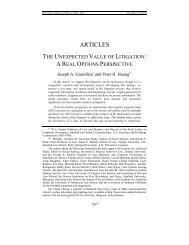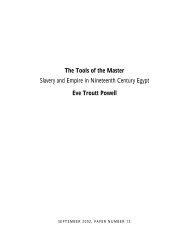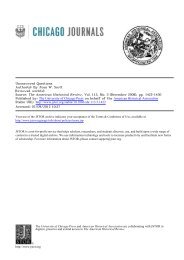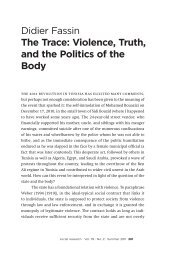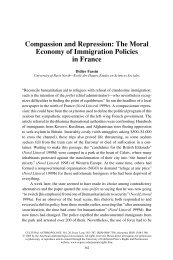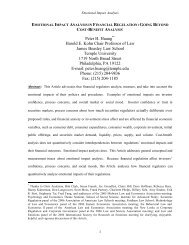Secure Implementation Experiments: Do Strategy-proof Mechanisms ...
Secure Implementation Experiments: Do Strategy-proof Mechanisms ...
Secure Implementation Experiments: Do Strategy-proof Mechanisms ...
You also want an ePaper? Increase the reach of your titles
YUMPU automatically turns print PDFs into web optimized ePapers that Google loves.
outcome. These Nash equilibrium outcomes are frequently socially undesirable. This is<br />
illustrated be the following two well-known strategy-<strong>proof</strong> mechanisms. 5<br />
Example 1: The pivotal mechanism (Clarke, 1971).<br />
Consider the pivotal mechanism, which is one of the two mechanisms studied in the<br />
present experiment, for a two-agent economy with a binary non-excludable public good and<br />
quasi-linear preferences. Two agents 1 and 2 are facing a decision whether or not they should<br />
produce the public good. Agent i's true net value of the public good is v i if it is produced, and<br />
her true net value is 0 otherwise ( i = 12 , ). In the pivotal mechanism, each agent i reports his net<br />
value ~ v i and the outcome is determined as follows:<br />
Rule 1: if ~ v + ~ v ≥ , then the public good is produced, and if not, then it is not produced; and<br />
1 2 0<br />
Rule 2: each agent i must pay the pivotal tax t i<br />
where j<br />
t i = − ~ v j if ~ v j < 0 and ~ v + ~ v ≥<br />
= ~ v j if ~ v j > 0 and ~ v + ~ v <<br />
= 0 otherwise<br />
≠ i .<br />
1 2 0<br />
1 2 0<br />
That is, an agent pays the amount needed to implement his preferred outcome if his report is<br />
pivotal and changes the chosen outcome.<br />
First, let ( v1, v2) = ( 5, − 4)<br />
be the true net value vector. Figure 1-(a) shows that the set of<br />
Nash equilibria is approximately a half of the two dimensional area. Notice that the public<br />
good should be produced because the sum of the net values of the public good is positive. The<br />
upper-right part of the set of Nash equilibria is “good” in the sense that constructing the public<br />
good is recommended. However, the lower-left part of the set of Nash equilibria is “bad” in the<br />
sense that producing the public good is not recommended.<br />
5 Other examples of strategy-<strong>proof</strong> mechanisms where “bad” Nash equilibria lead to inefficient outcomes include the<br />
Condorcet winner (median voter) scheme with single-peaked preferences, the uniform allocation rule (a fixed-price<br />
trading rule) with single-peaked preferences, and the top trading cycle rule in a market with indivisible goods.<br />
10




